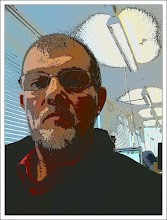WILLY RONIS
 Willy Ronis, photographer: born Paris 14 August 1910; died 12 September 2009.
Willy Ronis, photographer: born Paris 14 August 1910; died 12 September 2009. One afternoon in 1949 in the South of France, Willy Ronis came upon his wife Marie-Anne washing. She stood on a stone flagged floor, her shoulders illuminated by the strong Provencal sun. "I said to her, 'stay like that' and taking the camera from the chest of drawers, went three steps up the staircase and shot three frames." In that instant, Ronis made a portrait which has become emblematic of the romantic and wistful hedonism of post-war French photography. The innocent sensuality of a woman's body, set against the roughness of floors and walls, the intricate tracery of leaves and branches seen through an open window, all present, a tableau of a momentary paradise.
One afternoon in 1949 in the South of France, Willy Ronis came upon his wife Marie-Anne washing. She stood on a stone flagged floor, her shoulders illuminated by the strong Provencal sun. "I said to her, 'stay like that' and taking the camera from the chest of drawers, went three steps up the staircase and shot three frames." In that instant, Ronis made a portrait which has become emblematic of the romantic and wistful hedonism of post-war French photography. The innocent sensuality of a woman's body, set against the roughness of floors and walls, the intricate tracery of leaves and branches seen through an open window, all present, a tableau of a momentary paradise. Photography had always played an important role in Ronis's life. His father owned a photographic studio in Paris, and after serving as a meteorologist in the French Air Force the 22-year-old Ronis joined the family business. But studio portraiture, with its posing and artifice, soon lost its appeal; by the mid-1930s, his growing fascination with photographing the street life of Paris had propelled him towards an intense and politically committed photodocumentary. As-signments came from picture magazines, in particular from the leftist journal Regards.
Photography had always played an important role in Ronis's life. His father owned a photographic studio in Paris, and after serving as a meteorologist in the French Air Force the 22-year-old Ronis joined the family business. But studio portraiture, with its posing and artifice, soon lost its appeal; by the mid-1930s, his growing fascination with photographing the street life of Paris had propelled him towards an intense and politically committed photodocumentary. As-signments came from picture magazines, in particular from the leftist journal Regards.He photographed in factories and on the streets, producing harsh critical documents in which there was no space for romanticism. By the end of the 1930s, Ronis had mounted two one-man shows, "Neige dans les Vosges" and "Paris la Nuit". Stimulation came from new friends like the emigre photojournalists Chim Seymour and Robert Capa, as Paris became the centre for European photojournalism. more:

